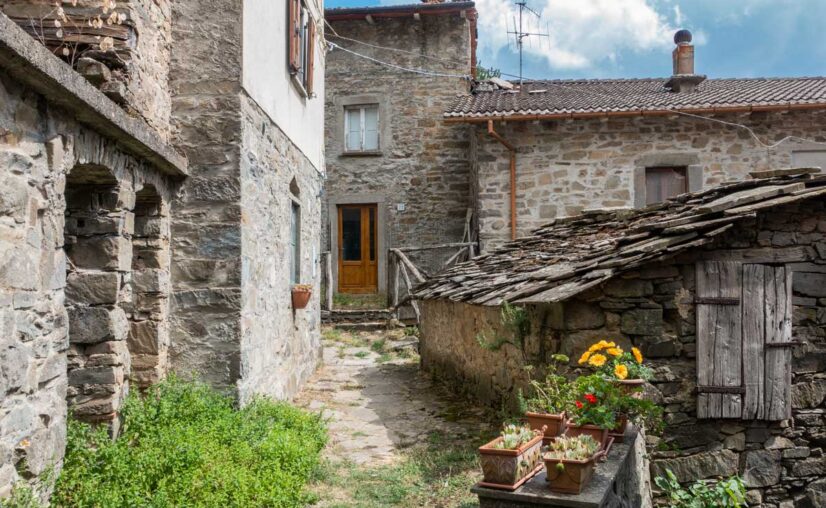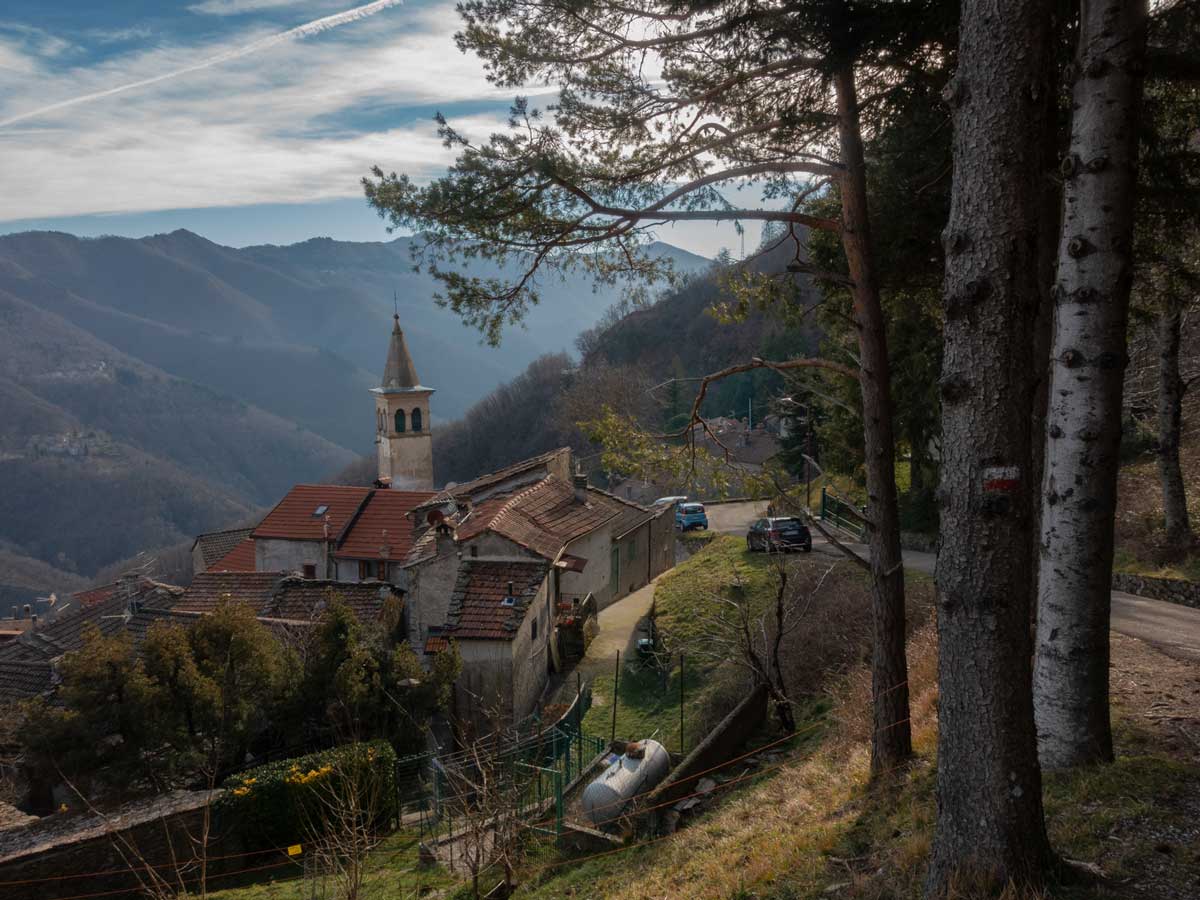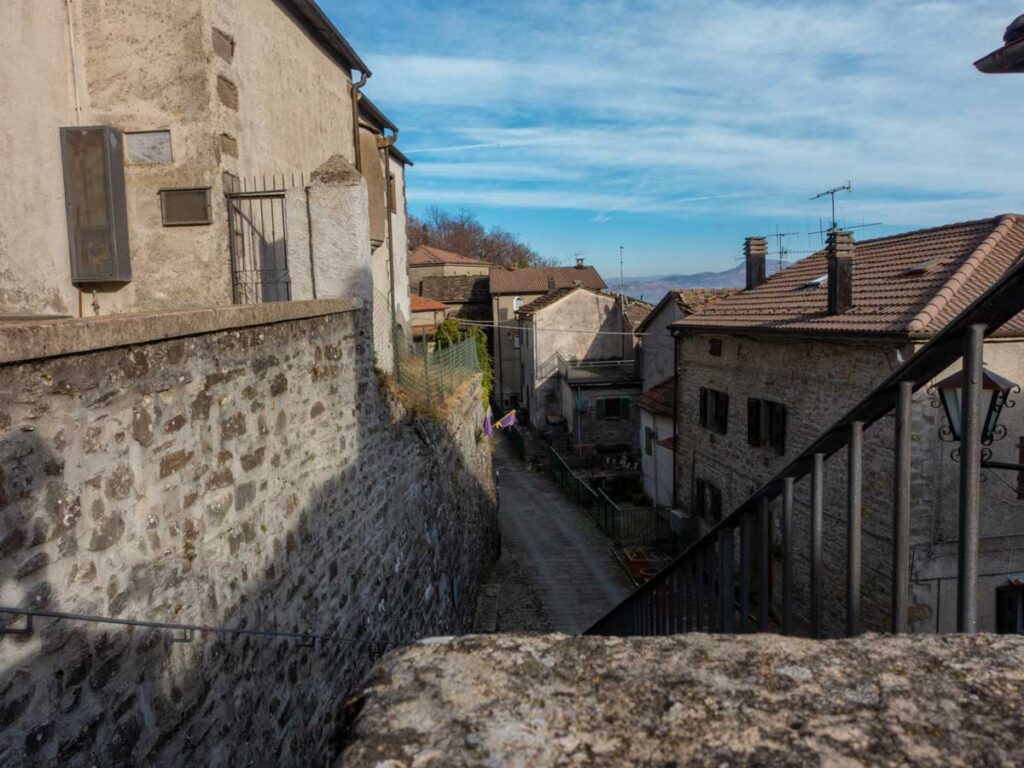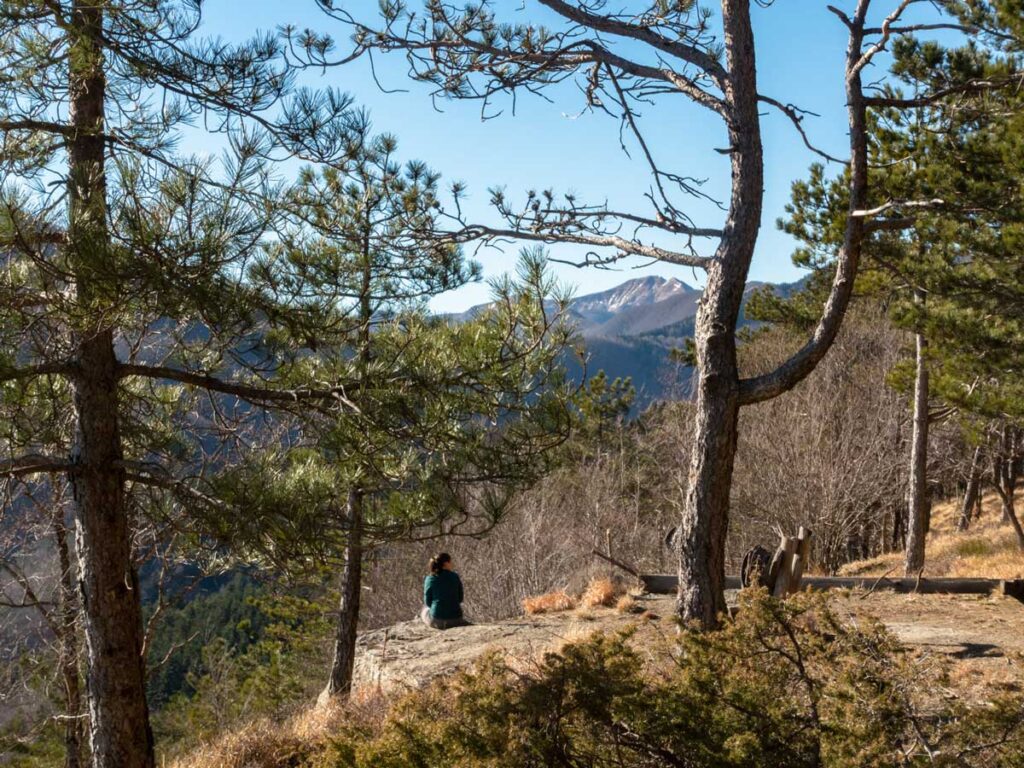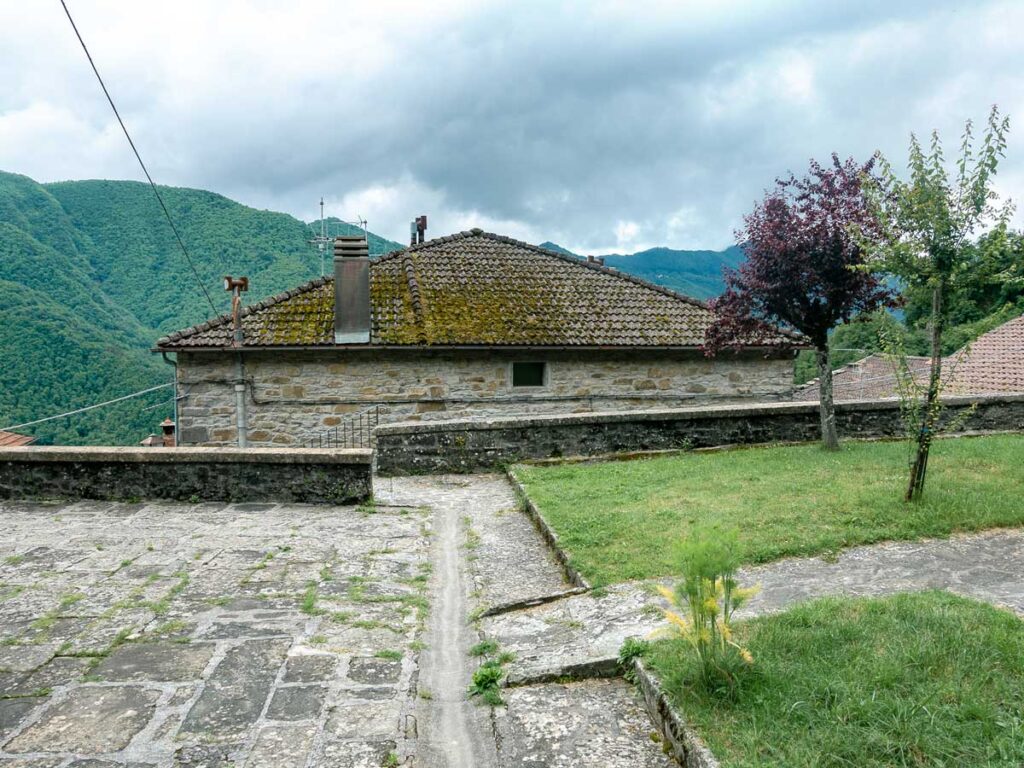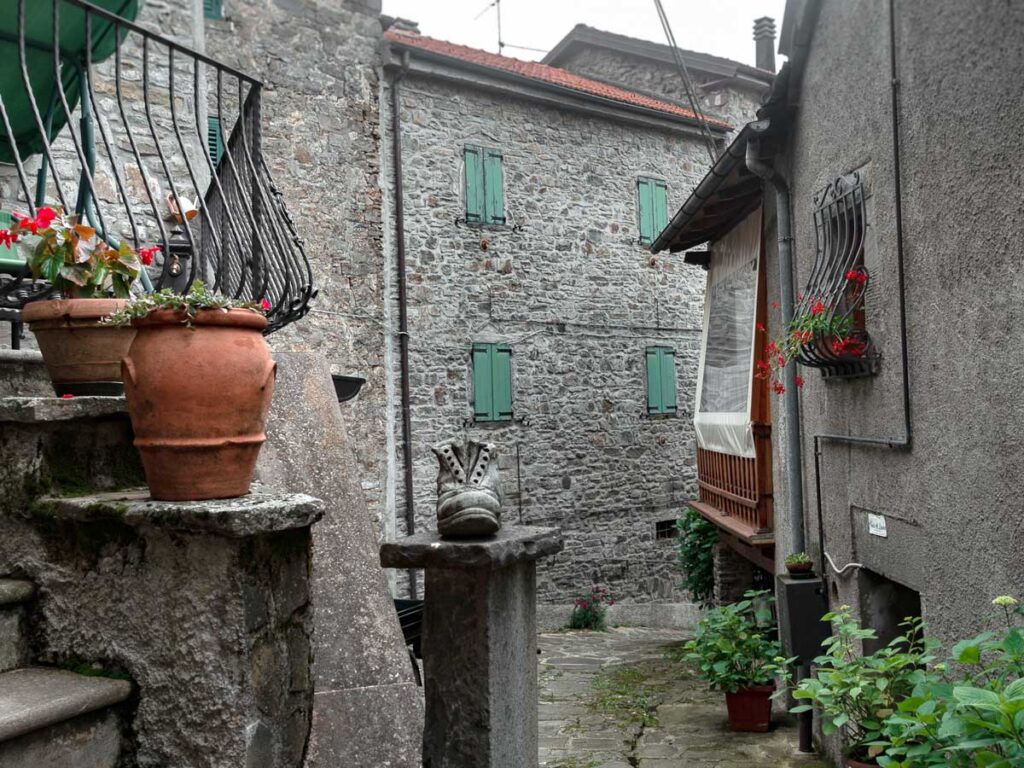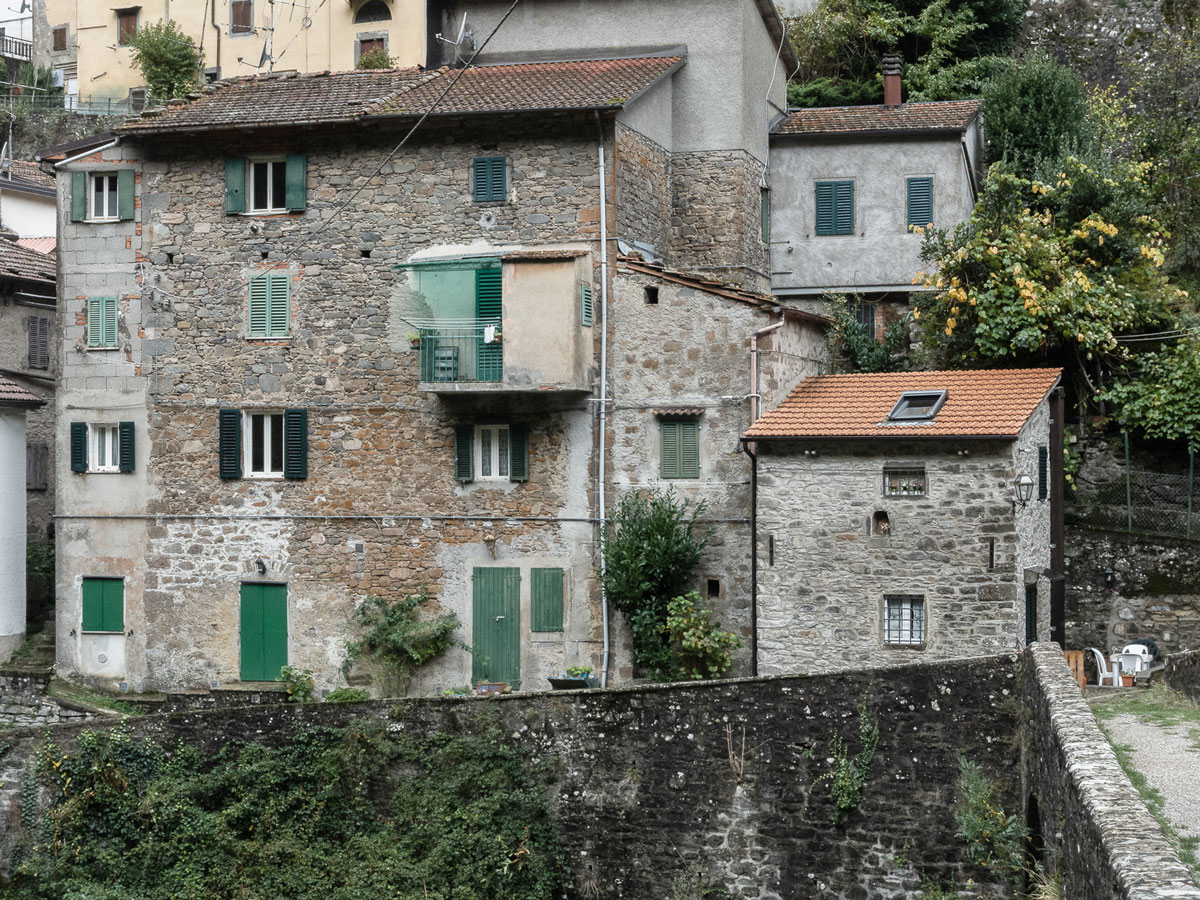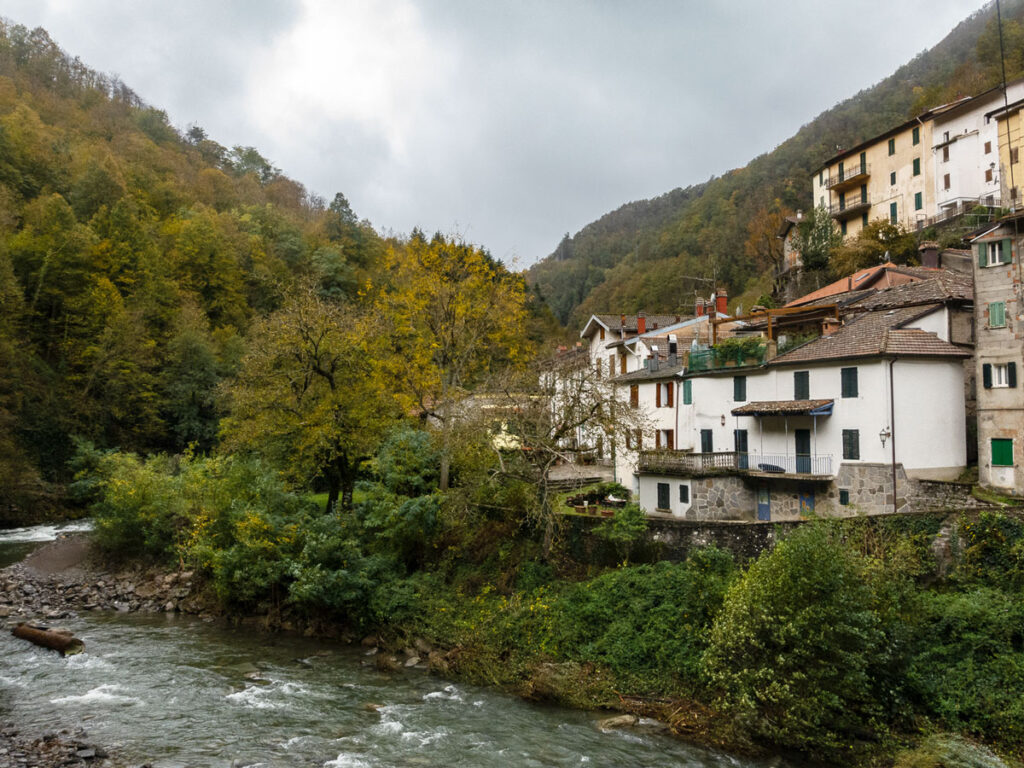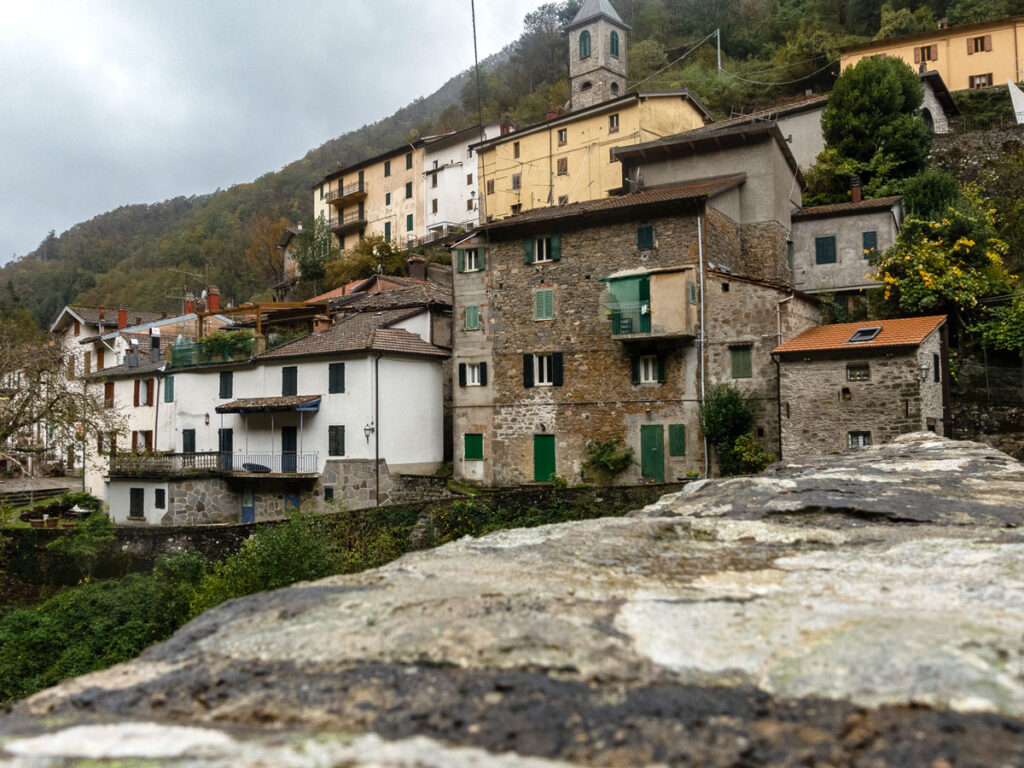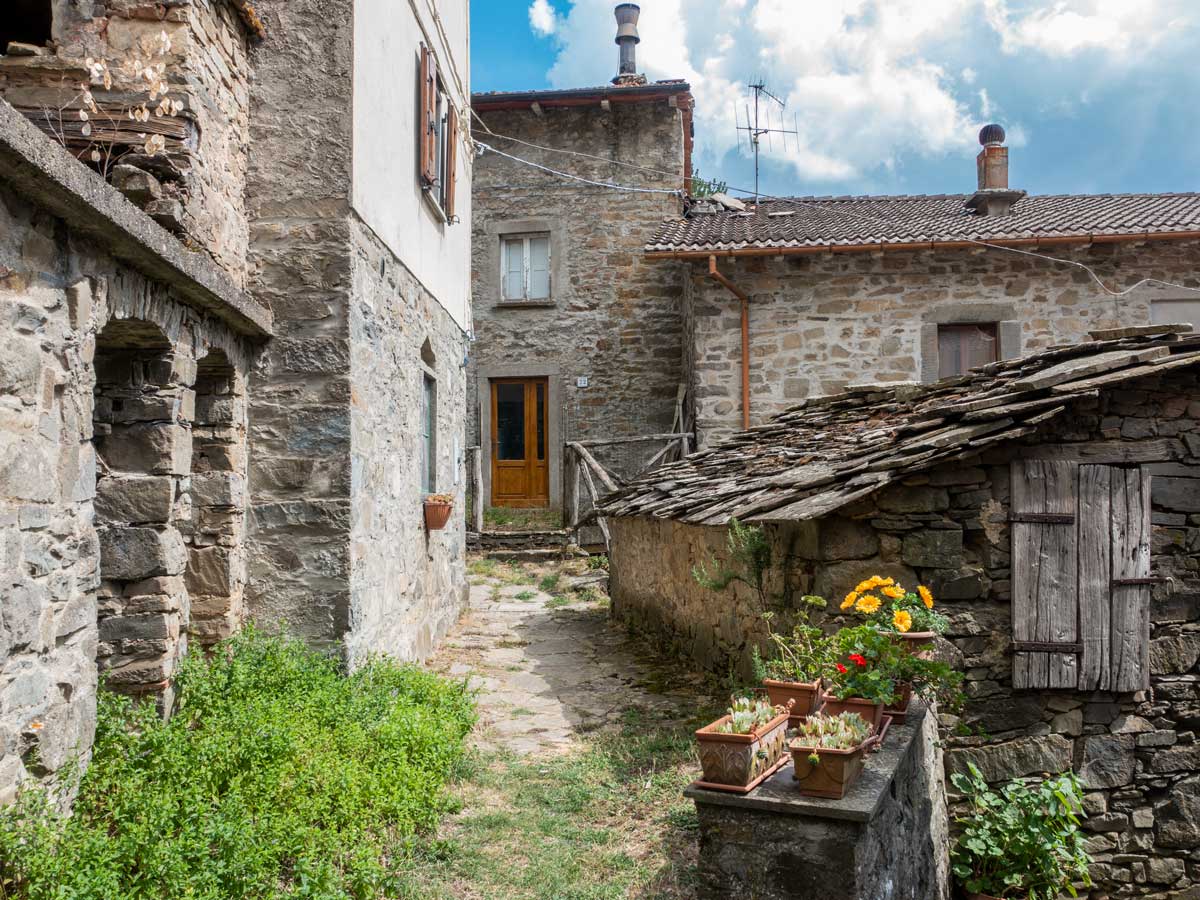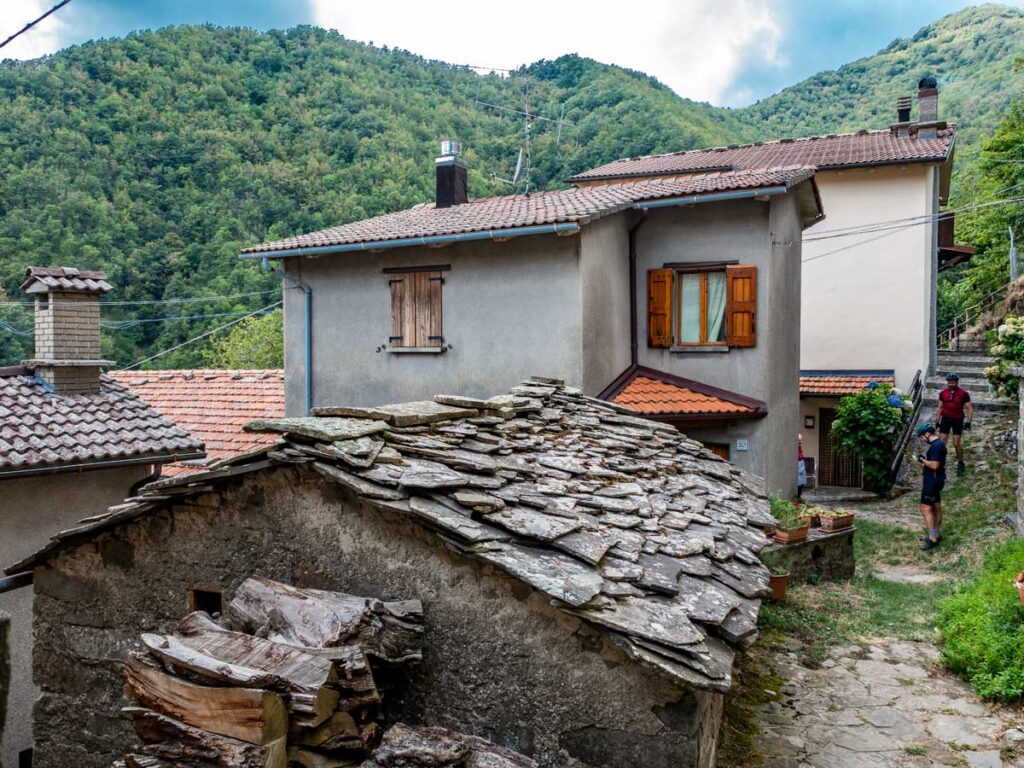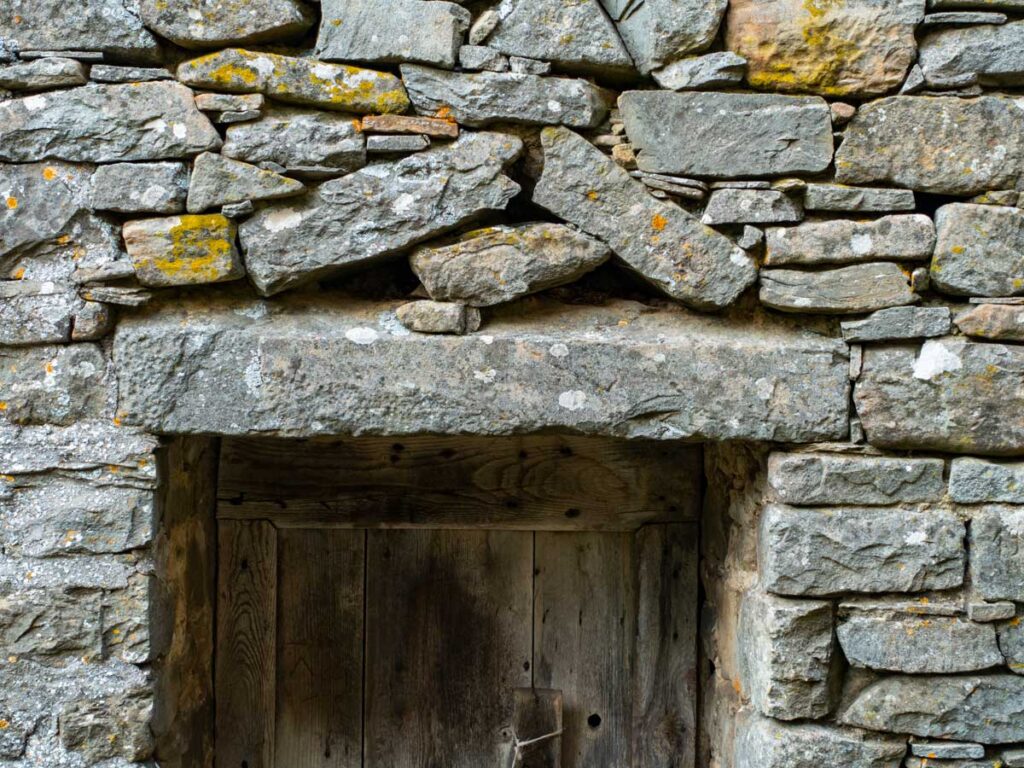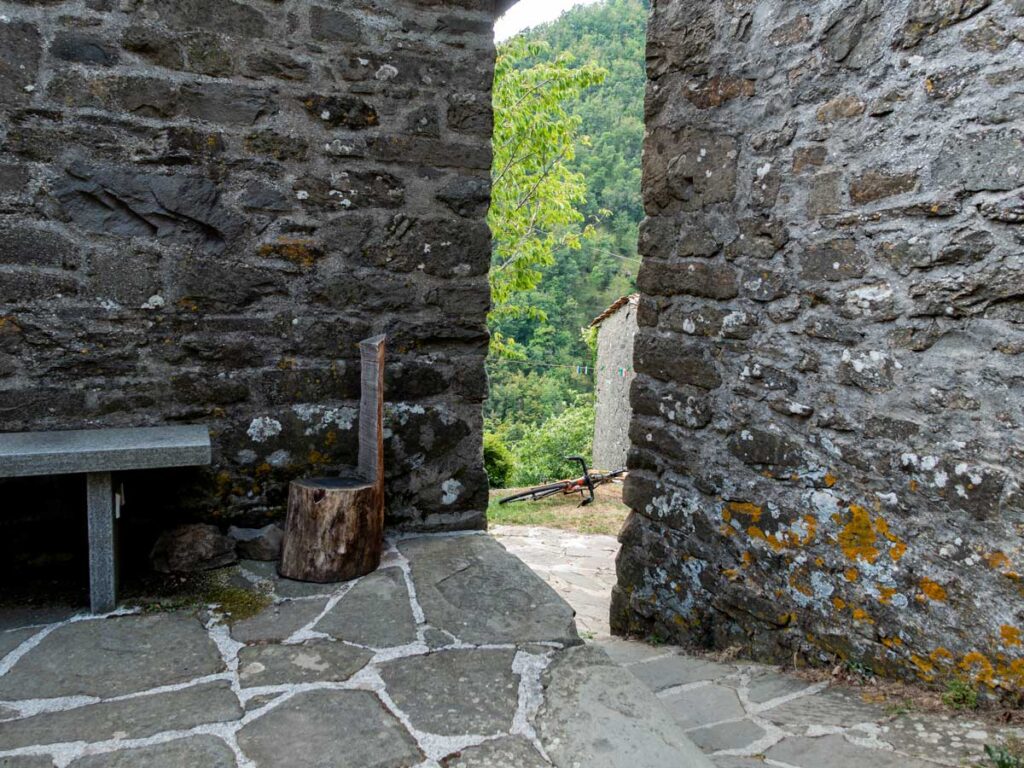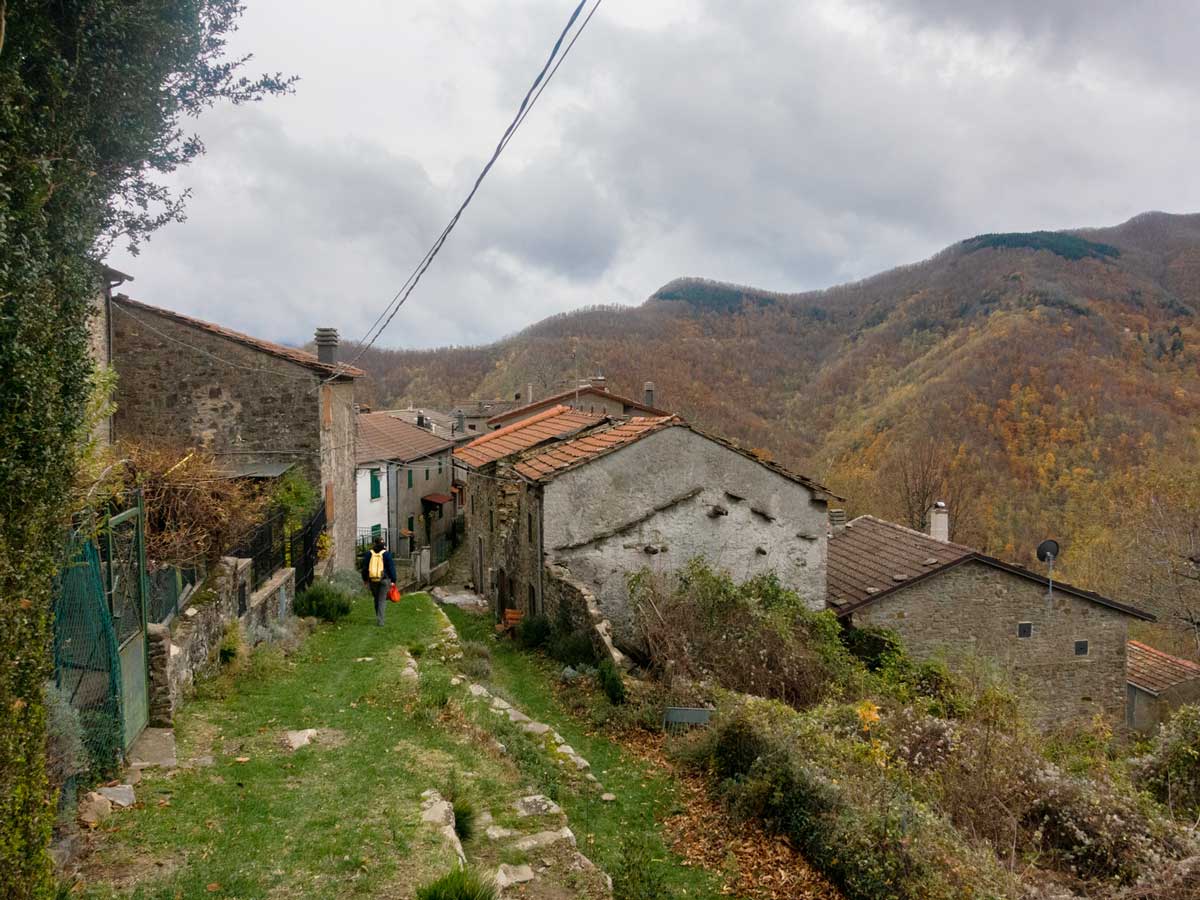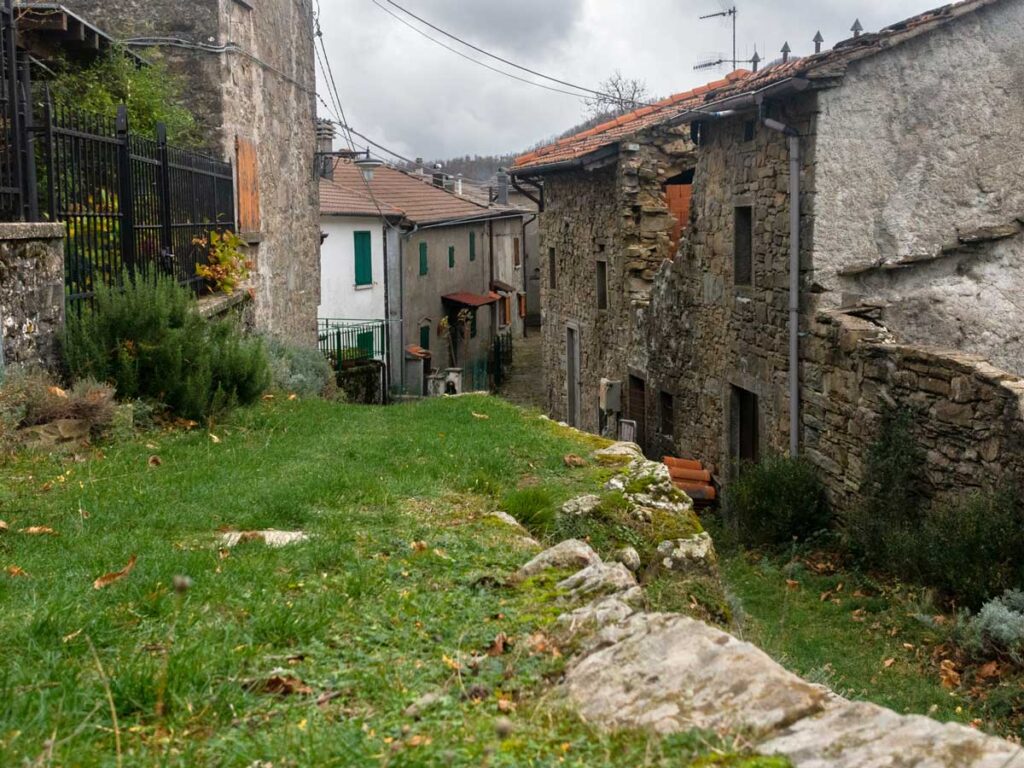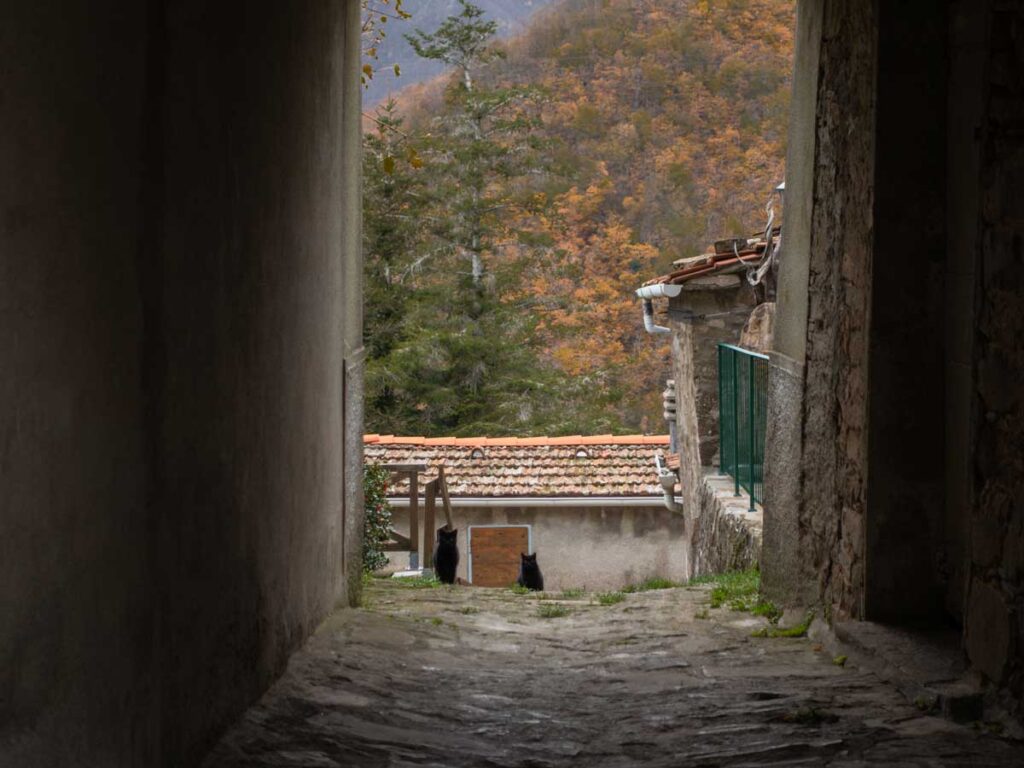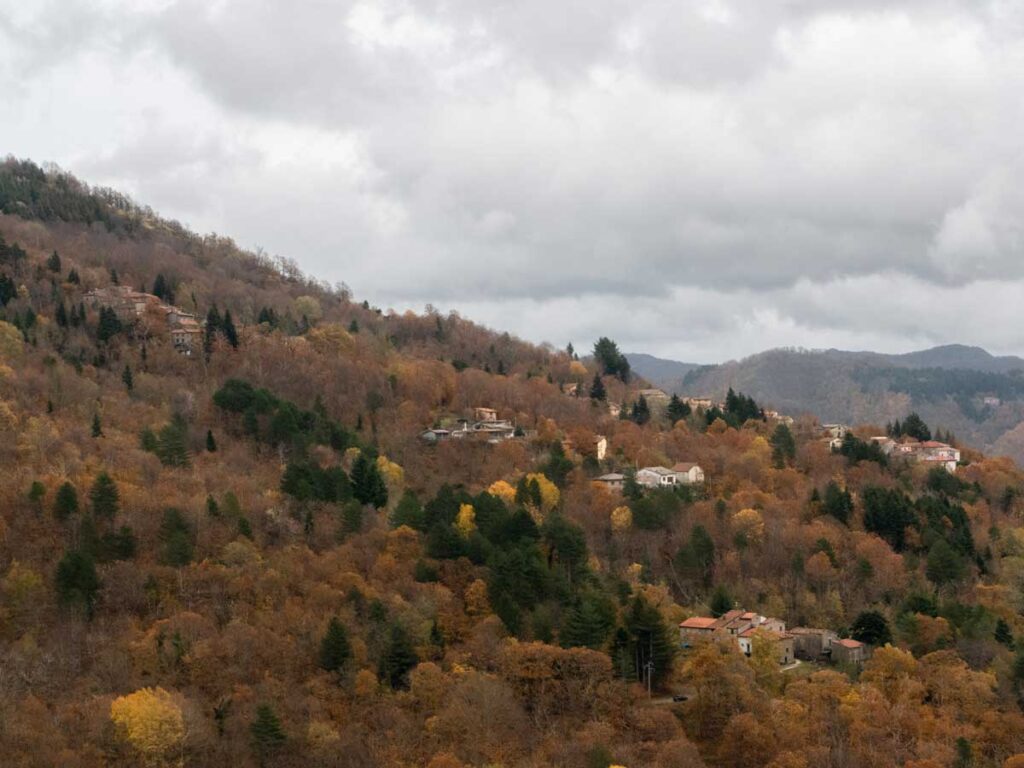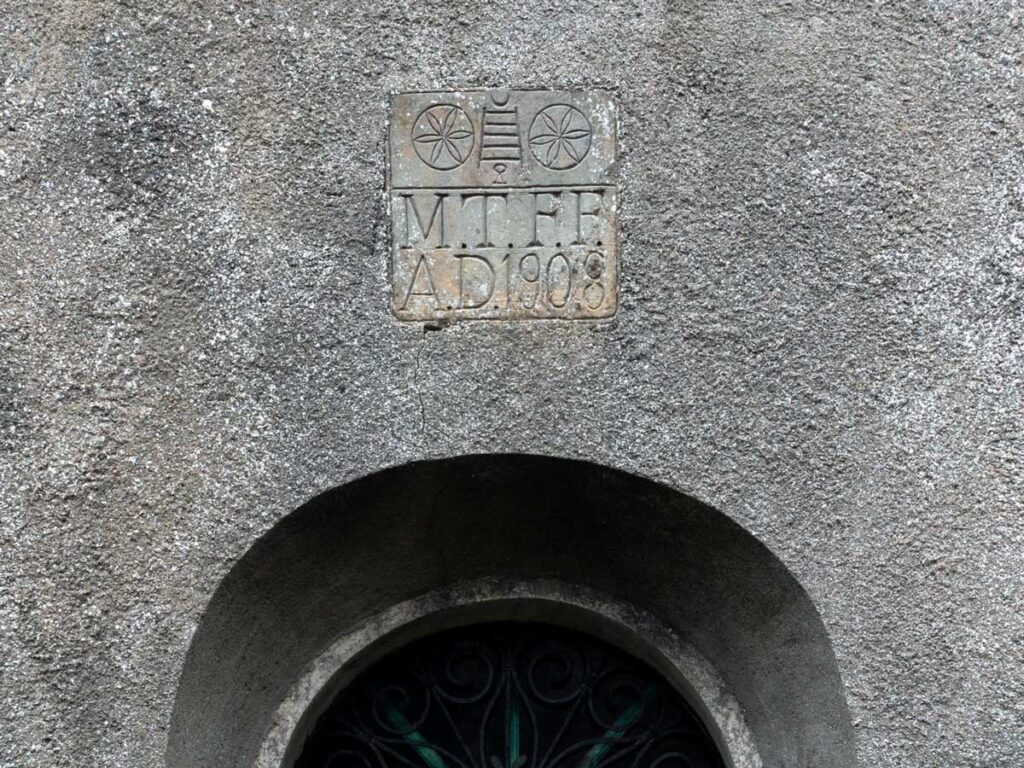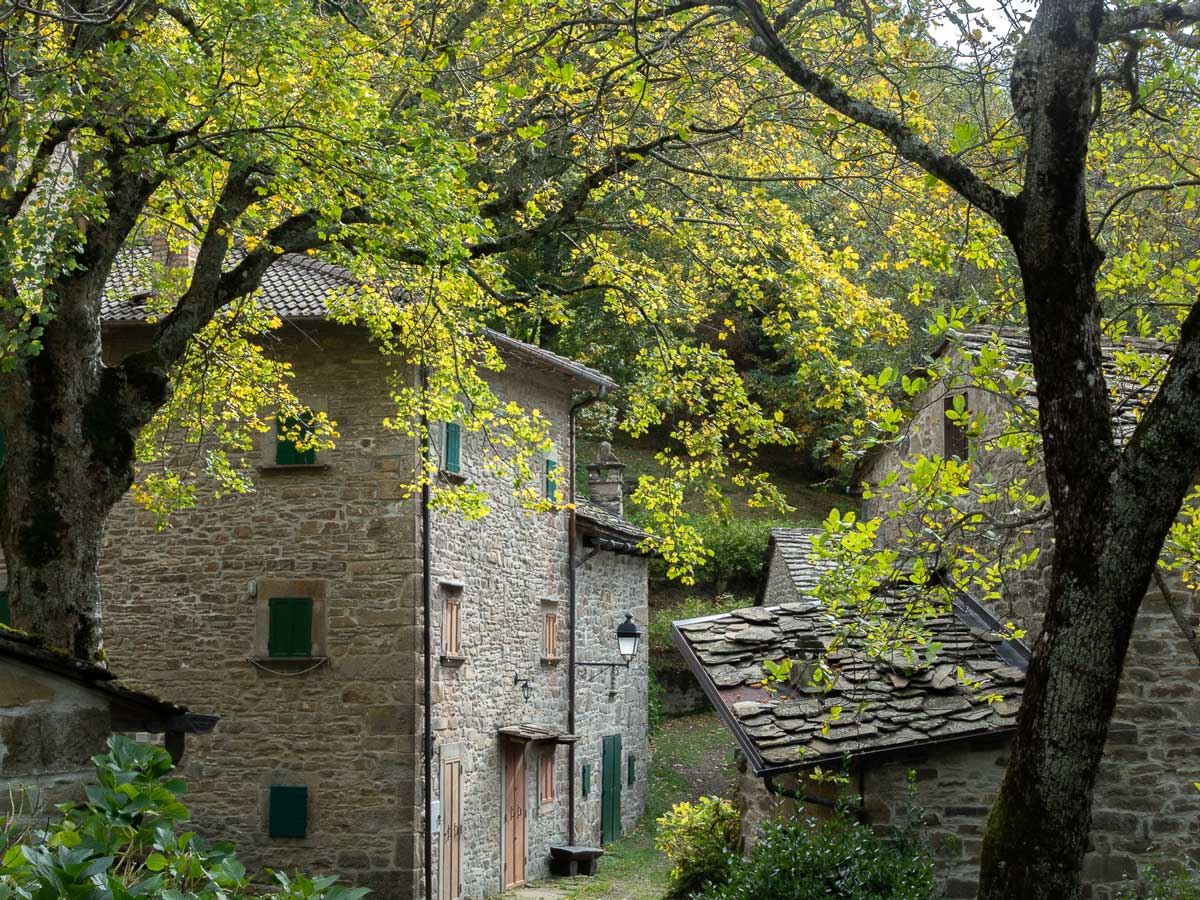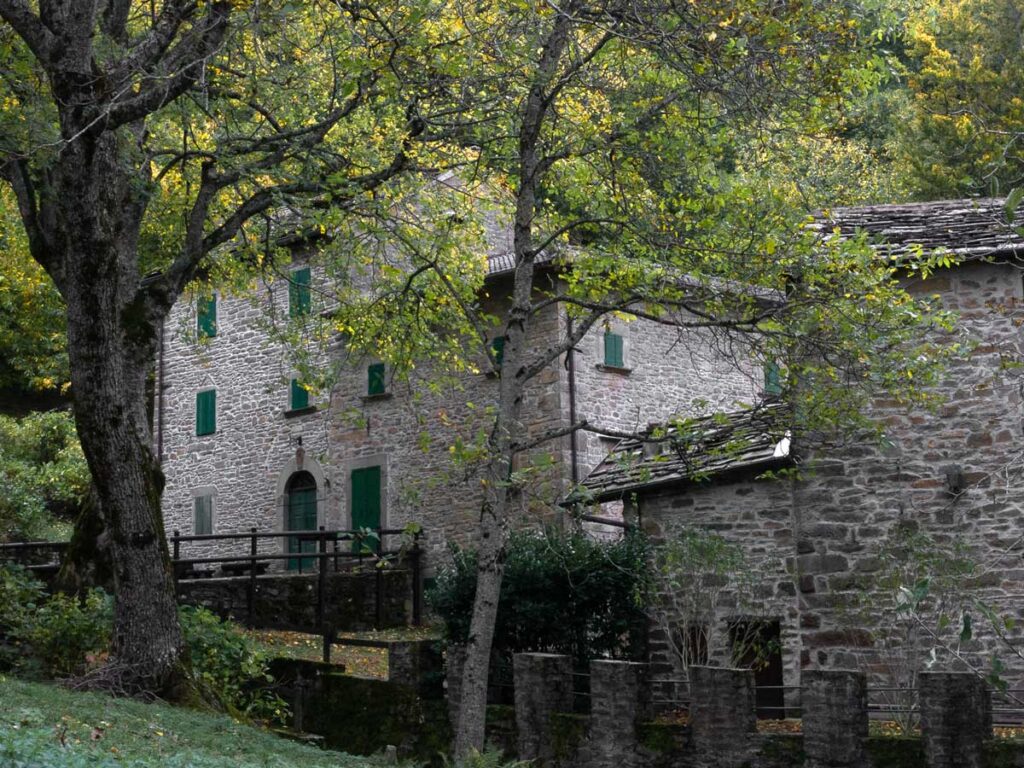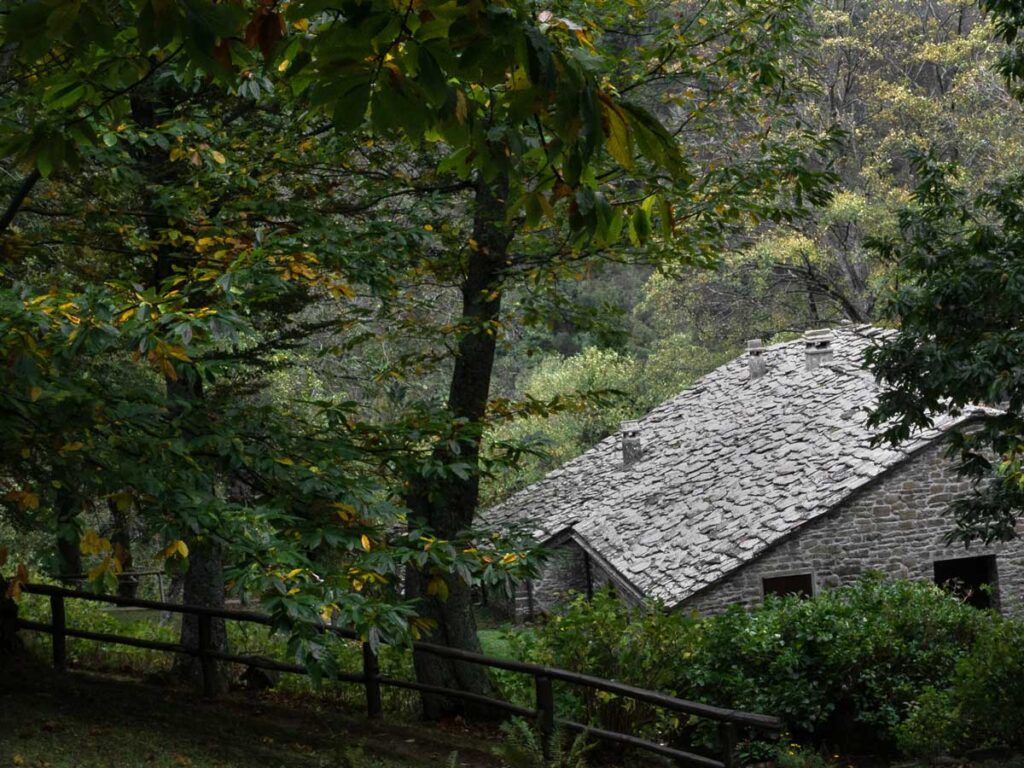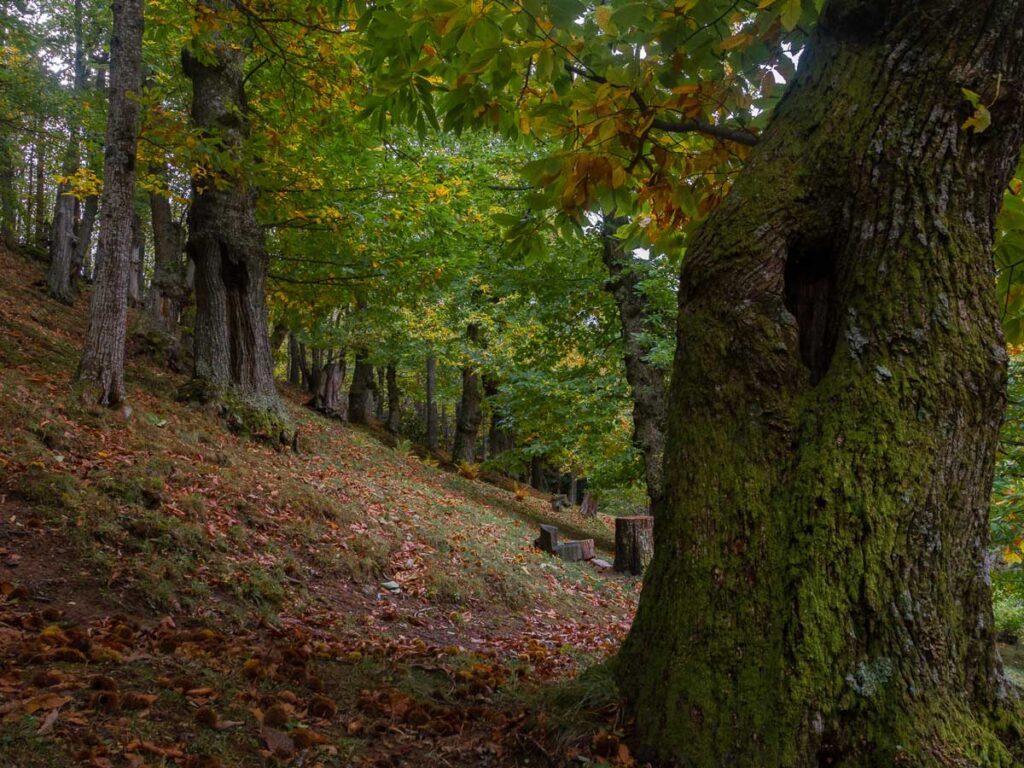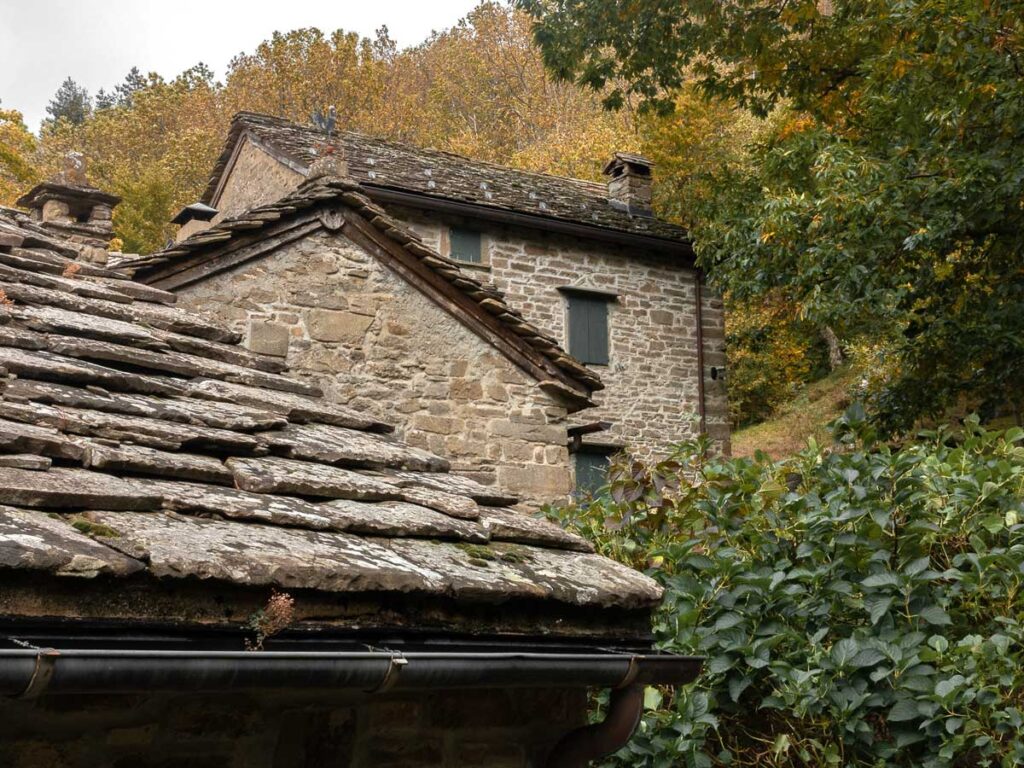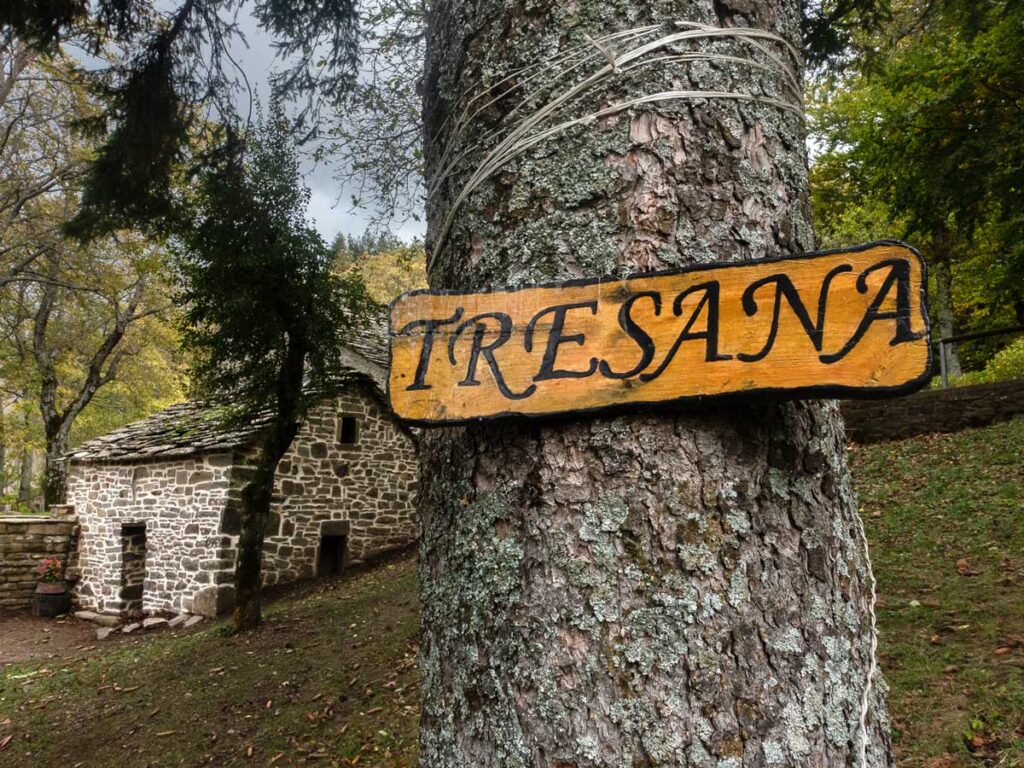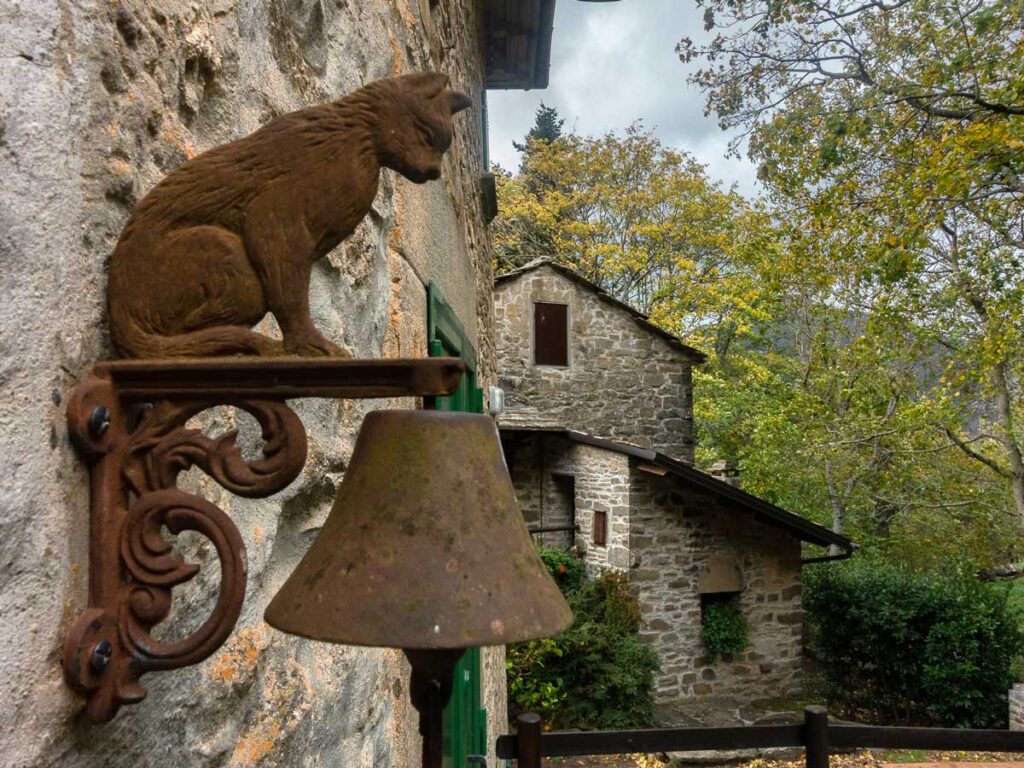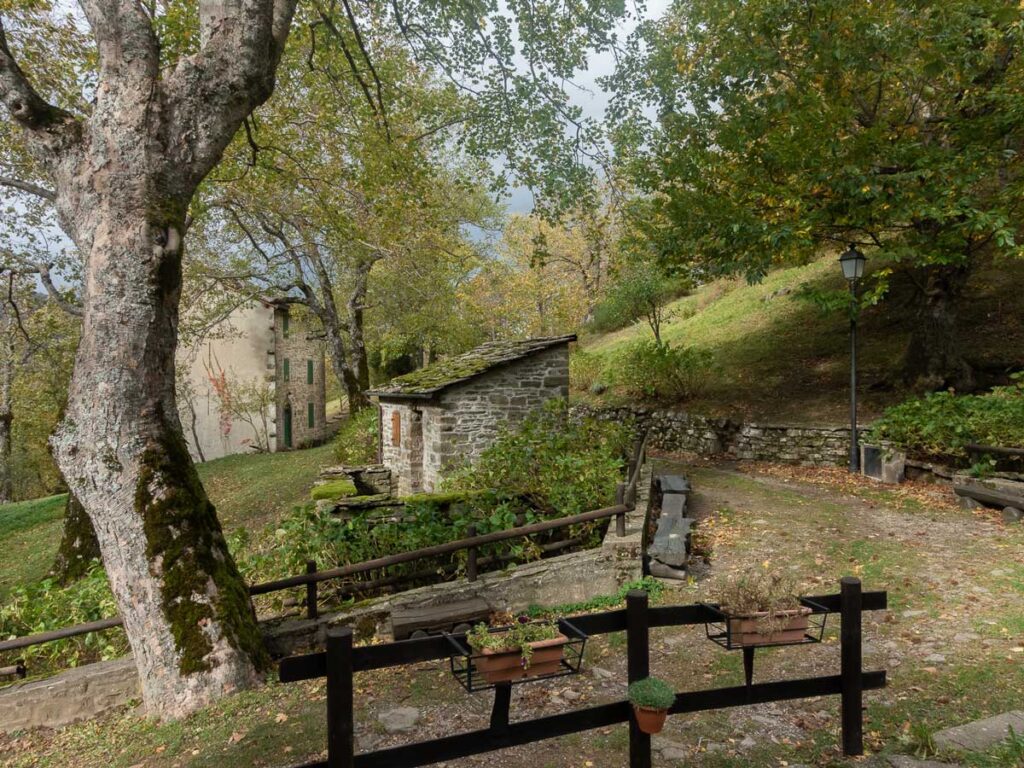© photos by Giovanni Zati/Appennino Slow
If we were to follow the course of the Reno river in reverse, from its mouth to its source, we would find ourselves in a succession of landscapes that suddenly change as we approach the steep ridges of the Apennines between Bologna and Pistoia.
Amidst the dense forests that cover the mountain slopes with the twisted shapes of age-old chestnut groves, dark fir forests and large beech trees that stretch up to the ridges, we find small stone villages far from mass tourism, jealously guarding the ancient breath of these mountains.
The list would be a long one; this time we have decided to select five to discover over a weekend.
Lustrola
We could not but begin with the thousand-year-old village, one of the oldest in the entire Reno valley. Lustrola is a small medieval village that stands 750 metres above sea level, on the provincial road to Granaglione and immersed in chestnut groves halfway up the hillside. The settlement dates back to 1021, the year in which we have the first certain news.
It is composed of a series of stone houses in the unmistakable architectural style of Apennine houses; among its vines is the beautiful Church of San Lorenzo.
The small grass parvis is a beautiful panoramic balcony on the opposite slope, which like an immense wall of mountains and woods stretches towards the Pistoia horizon.
Crossed by a single road, the Via Mezzola, Lustrola once housed an ancient castle of Matilde di Canossa, now destroyed. However, the residential and military vocation remains very present in the architecture of the village, in buildings such as the Zanini tower..
Biagioni
On the banks of the Reno we find the small 15th-century village of Biagioni, divided precisely by the river and the Romanesque bridge from the Tuscan village of Lagacci.
Once a border area between the Papal States and the Grand Duchy of Tuscany, in Biagioni we still find a building indicated as the site of the ancient Customs House. Also near the bridge we find the house called ‘maremmana’, because it was used as a resting place for shoeing horses and as a resting place for shepherds and woodcutters who then continued on to the Maremma for the transhumance.
In the square in front of the church dedicated to St John the Baptist, stands a monument commemorating the Nazi-Fascist massacre that took place on 4 July 1944 in the churchyard.
Casa Chierici di Biagioni
Moving up the mountain, we find the small hamlet of Casa Chierici, immersed in the enchantment of the Apennine woods. Leaning on the slope, the hamlet is perfectly preserved, maintaining the historic appearance of stone houses and roofs made of stone slabs.
From the small square you can reach the nearby Casa Trogoni, or the ruins of Case Banditelli; witnesses to a distant past.
Poggio dei Boschi
In all probability the original village of the noble Taruffi family, Poggio rises 900 metres on the high ground that divides the Rio Muraglio from the Altede ditch. The houses built close to each other give the village an atmosphere of solidarity and unity among the very few inhabitants.
At the highest point stands the Oratory of St Michael Archangel, built in 1702 and in 1818 it was erected as a subsidiary of the Parish of the Woods.
The Poggio is crossed by a paved road that connects it to Calnecchia and Noci below; upstream to Casa Giobbe and Casa Burchio. Together with other small centres such as Nibbio, Poggio dei Boschi was considered ‘the fourth’ of the five districts that make up the nuclei of the Boschi.
Given its position at altitude, the village of Poggio enjoys a privileged view of the heights that in a semicircle enclose the view: from Mount Lucci to Mount Cocomero to Orsigna.
Tresana
We change valley and move further over the ridge of Monte Cavallo to Rio Baricello, where we find the small hamlet of Tresana.
The village is immersed in the thicket of finely tended centuries-old chestnut groves, which fill the entire nucleus of square stone houses, their roofs all made of stone slabs, with a truly fairy-tale charm.
It stands at 930 metres at the foot of Mount Tresca, from which it perhaps derives its present name. It was probably founded by Francesco Degli Antoni in 1501 around a spring that still gives clear, fresh water.
From Tresana you can reach the Tognarino Mill where chestnuts from the various drying houses in the area were once ground. From the Mulino di Tognarino starts the so-called Via dei mulini (Mill Road). Beautiful in every season, Tresana comes to life in summer thanks to the inhabitants on holiday, who decorate the various houses with typical hydrangeas.

